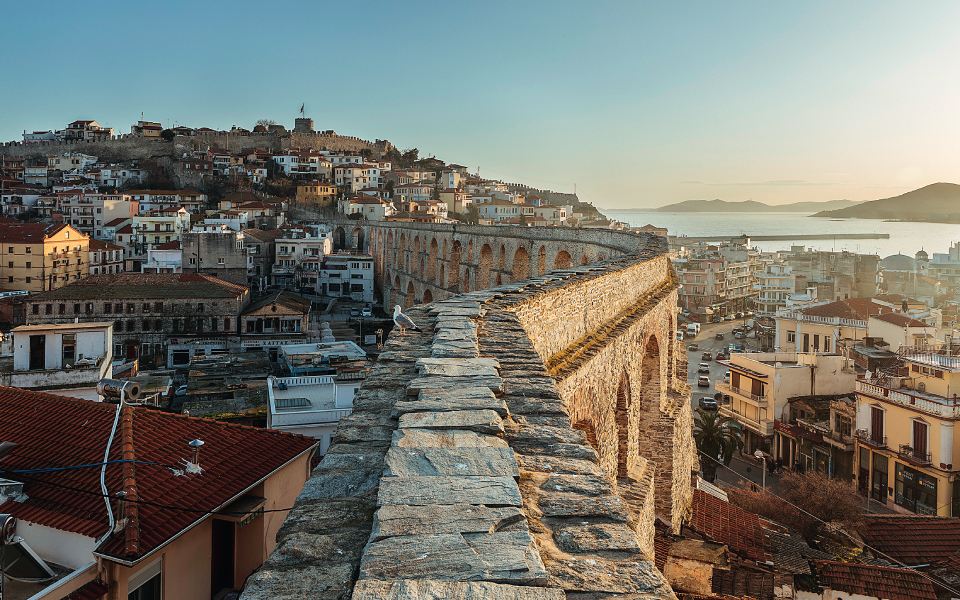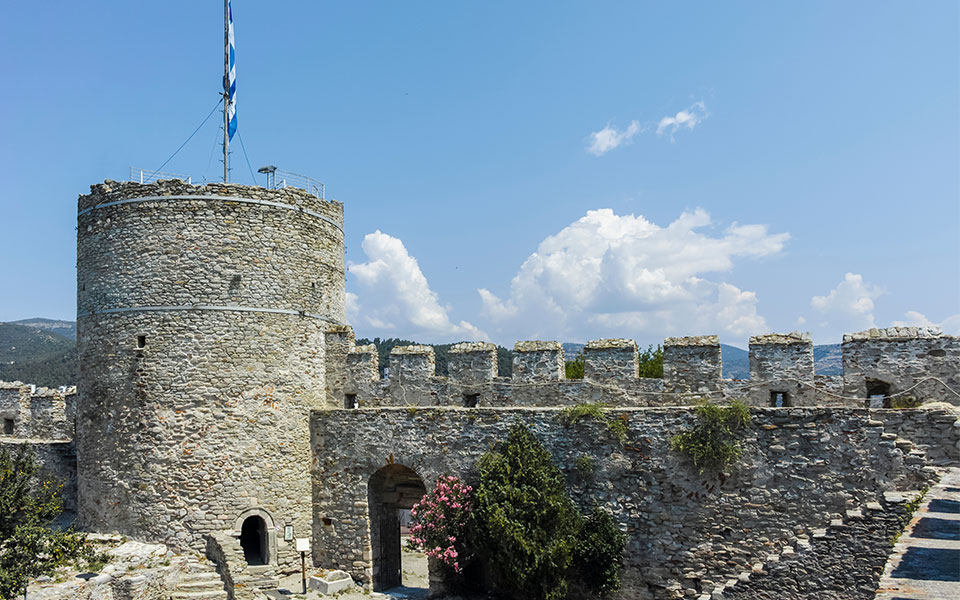Greece’s Ministry of Culture and Sports has announced plans for a major upgrade of the facilities at the 15th century Kavala fortress in eastern Macedonia. A comprehensive program of works will improve accessibility for visitors, including those with disabilities, and upgrade the open-air theater in the outer precinct of the fortress.
These works will form part of a major overhaul of the infrastructure of the monument, enhancing its role as an important cultural site and tourist hub for the city of Kavala.
“The planned works are aimed at solving the problems of access to the space and safe movement inside it. The theater will undergo an aesthetic and functional upgrade, rest and recreation areas will be created, and the experience of the visitors will be enriched, enhancing the site as the major cultural and tourist attraction for the city,” said Minister of Culture and Sports Lina Mendoni.

© Hellenic Ministry of Culture and Sports
Positioned atop the Panagia peninsula overlooking the Old Town and the harbor, the medieval fortress of Kavala is the city’s most prominent landmark. Built on the ruins of the earlier fortifications of the Byzantine Acropolis of Christoupolis (“City of Christ”), which were destroyed at the end of the 14th century, the fortress once defended a vital section of the Via Egnatia, an ancient Roman road that crossed the Balkans from the Illyrian coast of the Adriatic Sea to the city of Byzantium (later Constantinople). Successive repairs and modifications were made to the site over the centuries, from the Byzantines to the Venetians and the Ottomans. Much of the fortress complex visible today was built by the Ottomans, who first captured the city in 1387. It was last used as a military garrison by the Germans in World War II.
Today, visitors can see the central tower, the gunpowder and food store, which was later converted into a prison, a large water cistern, and the old quarters, where guards and other military personnel were billeted. Well-preserved walls surround the outer precinct of the complex, including three towers, and an inner precinct, which hosts an open-air theater for cultural events in the summer.

© Nicholas Mastoras
The upgrade program will create access routes for visitors with disabilities, including the installation of a specially designed elevator at the main entrance. The floor surfaces inside the inner precinct will be smoothed and rest areas added, allowing better access for wheelchair users.
The works on the open-air theater, launched through the Cultural Development Program Agreement between the Ministry of Culture and Sports, the Region of Eastern Macedonia – Thrace, and the Municipality of Kavala, will be financed by the EU’s Recovery Fund. Upgrades include the replacement of the existing stage of the theater, the remodeling of the bleachers creating a uniform ensemble and the replacement of the existing seats, all in accordance with current safety standards. To allow better access to the inner precinct, the northern gate of the fortress will be reopened.











